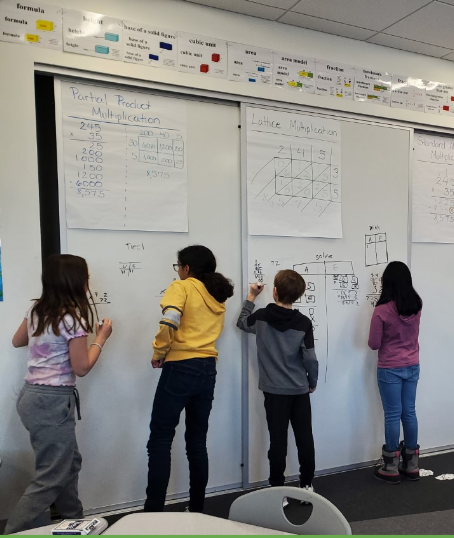BREAKING FREE FROM THE 'SMART' KID'S BRAIN' MYTH’
Were you ever a student in a math classroom that sat there in silence wishing that you could “pick the smart kid’s brain”? Did you ever wish that you could ask other kids questions like “how did you know that?” or “tell me how you solved that problem?”
I know that I was this kid. I always struggled in math class and defiantly did not consider myself smart. I watched as other kids solved problems correctly and more quickly than I did. I watched them get papers back with grades that were much higher than mine and all the while wished that I could just understand things the way that they did. I began to think that there was something wrong with me.
But now I understand what was happening. My teachers followed a structure called “I do, we do, you do”. This teaching structure is very traditional and makes the teacher the “knower of all.” And this is a big reason why I struggled. The teacher did most of, if not all, the talking. Showing us what procedures to follow to get an answer and how to solve problems in the way that they solved them (even though it didn’t make sense to me). Then we practiced that strategy over and over and over again, alone. Then we left.
I always wonder how different things would have been for me if I had the chance to talk to another student. To hear other peoples’ ideas or strategies for solving problems. Maybe this would have helped me succeed. This structure of teaching is called a Problem Based Learning Structure and it follows a “you do, we do, I do” approach. Allowing students to make sense of, model with, discuss and debate about the mathematics. It allows all students to bring forth their knowledge and understanding (which can change from person to person) providing opportunities for questions and conversations around misconceptions. It is what happens in classrooms where all students are getting opportunities to succeed and understand the mathematics.
But a Problem Based Structure can be intimidating for some teachers. It takes away control. Instead of planning for the lesson to go exactly like you imaged, you now have to fly by the seat of your pants and be able to facilitate conversations to move students’ learning forward. You need to know how to ask the right questions and create the appropriate tasks . You need to create an environment where students trust one another and know how to have respectful conversations. It’s exhausting! But think of the reward.



